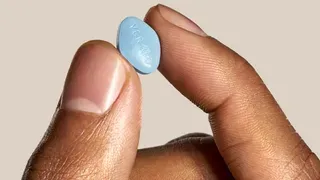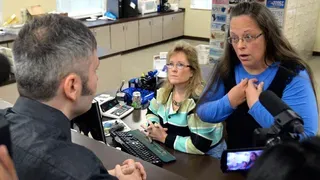October 5, 2012
Research on Mice Suggests New Fertility Treatments
Jason St. Amand READ TIME: 4 MIN.
NEW YORK - Scientists have turned mouse skin cells into eggs that produced baby mice - a technique that, if successfully applied to humans, could someday allow women to stop worrying about the ticking of their biological clocks and perhaps even help couples create "designer babies."
For technical as well as ethical reasons, nobody expects doctors will be making eggs from women's skin cells any time soon. But some see possibilities and questions about its use.
Some experts say it could help millions of women who don't have working eggs of their own, whether because of a medical condition or cancer treatment, or because they are too old.
"It could mean the reproductive clock doesn't tick for women anymore," said Hank Greely, a Stanford University law professor who studies the implications of biomedical technologies.
"I think it's a pretty large advance in the next generation of reproductive technologies for women," said Amander Clark, who studies egg development at the University of California, Los Angeles. Discussion about policy and regulation "needs to begin now."
The mice experiments were reported online Thursday in the journal Science by scientists at Kyoto University in Japan. The same group had previously reported work with male mouse cells that led to sperm.
In the new work, they began with genetically reprogrammed skin cells from female fetal mice. The reprogramming technique, discovered several years ago, makes an ordinary cell revert to a kind of blank slate, so it can be chemically prodded to develop into any kind of cell.
The Japanese researchers turned these cells into an early-stage version of eggs. Then they mixed them with mouse ovarian cells and implanted them into mice. Four weeks later they collected immature eggs, matured and fertilized them in the laboratory, and placed them into surrogate mother mice. The result: three baby mice, which grew into fertile adults.
That procedure is too cumbersome to be adapted directly for human use, experts said, and study co-author Katsuhiko Hayashi said in an email that it is also too inefficient. What's more, he and others said, biological differences between mice and people would have to be overcome before some version of the technique could be applied to women.
Starting with an adult's cells rather than fetal cells would probably work, experts said. But scientists would also have to learn more about how women form eggs, which is largely a mystery, some said.
The hurdles are so big that some experts are skeptical about ever using the approach in people. "I don't think there's a lot of clinical potential here," said David Albertini, who has studies the development of eggs at the University of Kansas.
Others are more optimistic but say it won't be easy. A human therapy is in "the quite far future," Hayashi said. Clark said it would take at least a decade.
Greely, the Stanford law professor, speculated that in 20 to 40 years, the technique might make couples more likely to go through test-tube fertilization just so they could choose characteristics of their babies. That is because donating skin cells to make eggs is a lot easier than going through the medical and surgical procedure of having one's own eggs harvested, which is what some women do now.
In the future, Greely said, couples could create eggs and then have the resulting embryos analyzed genetically. Then they could choose which embryos they wish to have implanted on the basis of that analysis, which by that date might be able to indicate not only disease risk but also a variety of normal traits such as eye color and or a propensity for certain talents, he said.
Some others, however, said they doubt that practice would become widespread.
"I don't think there's a huge market for it," said Debra Mathews of the Johns Hopkins Berman Institute of Bioethics. "And people are not going to stop having sex."
The technique also raises a host of medical and ethical concerns.
"I would be worried about the safety of trying to make kids this way," said Lawrence Goldstein, director of the stem cell program at the University of California, San Diego. "It seems like an experiment on those kids."
It would also be complicated and expensive, adding to the question of whether it would really be a good way to treat infertility, he said.
He and others also said society will have to decide how much government regulation would be needed, both for the initial research in humans and its routine use by doctors.
For example, the new work moves scientists closer to the possibility of tinkering with genes that would affect not only one person but also be inherited by future generations, which has long been controversial, said Dr. George Daley of the Harvard Stem Cell Institute. And basic research with such eggs could mean making and destroying human embryos in the lab, which many people oppose.
More controversy could arise over using the method for women who are infertile simply because of their age.
"Society is not clear about how it feels about older women having children," said Josephine Johnston of the Hastings Center, a bioethics research institute in Garrison, N.Y. She said there has been no sustained public discussion of "how old is too old, and what does that even mean."






